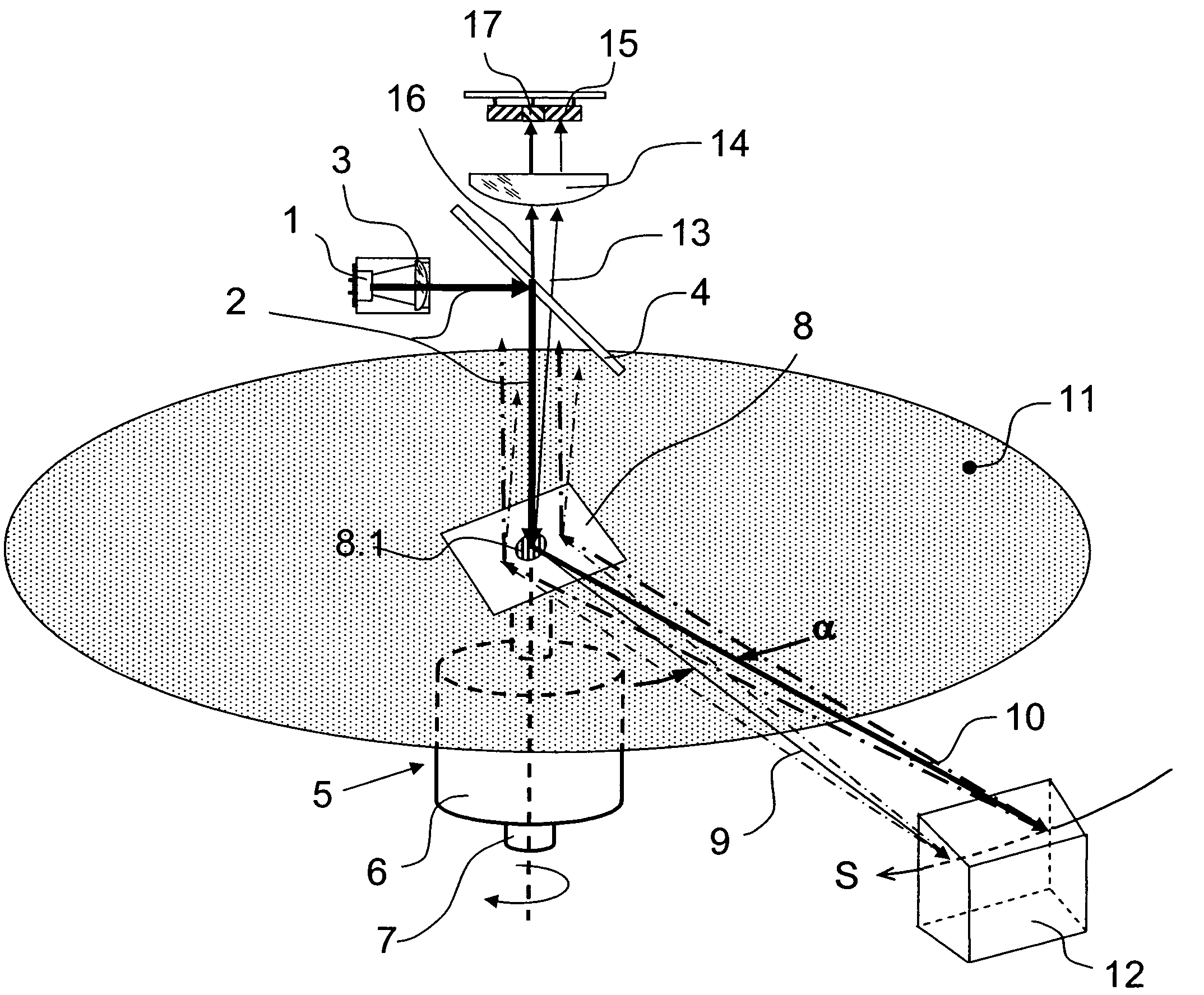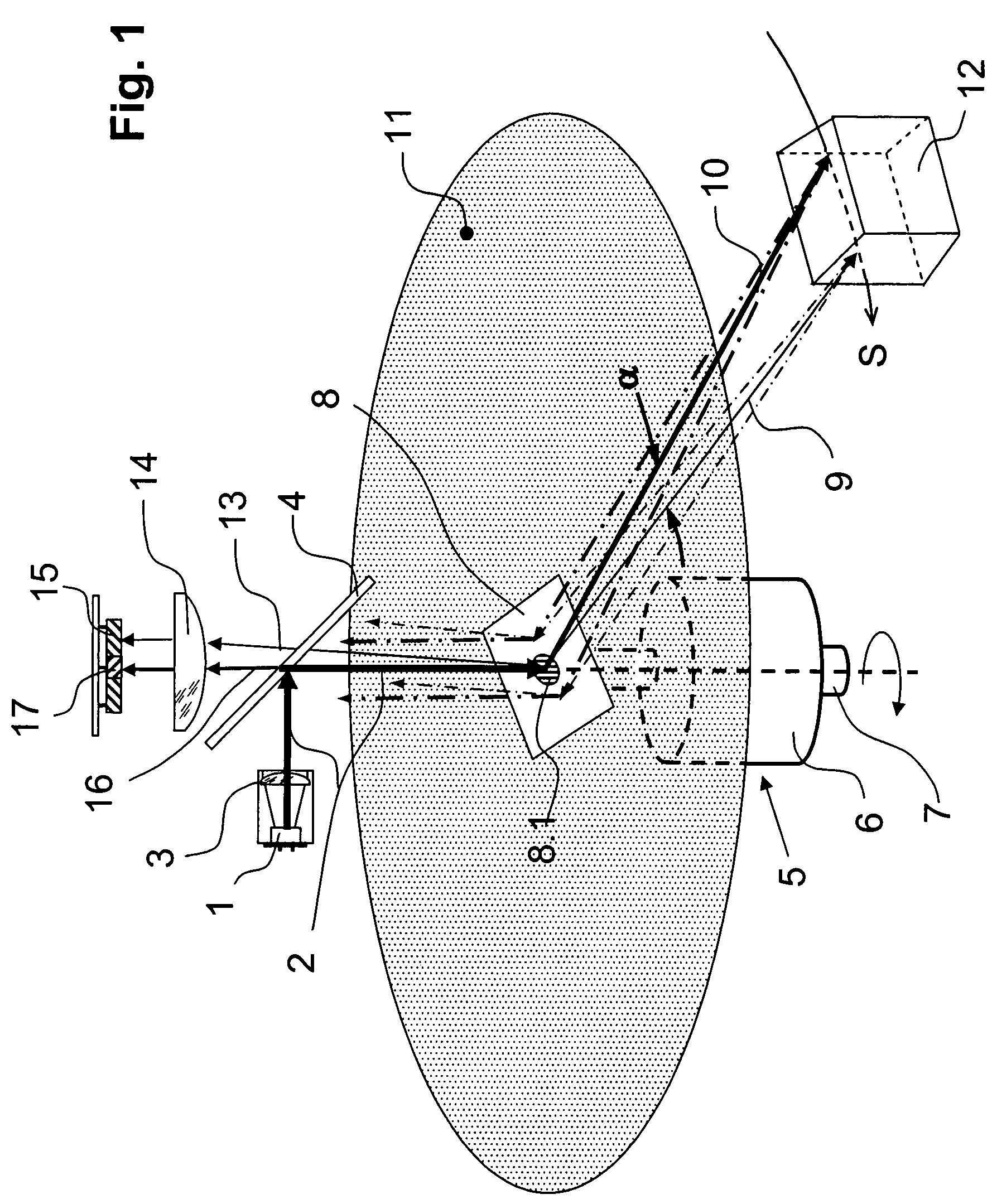Scanner
a laser radar and scanner technology, applied in the field of scanners, can solve the problems of relatively high production cost, malfunction of laser radar devices, and disadvantages of known state of the art, and achieve the effects of less sensitive, improved temperature compensation, and less sensitivity
- Summary
- Abstract
- Description
- Claims
- Application Information
AI Technical Summary
Benefits of technology
Problems solved by technology
Method used
Image
Examples
Embodiment Construction
[0019]Pulsed laser 1 emits a light beam 2 in the form of successive light pulses. To affect the light beam characteristics, a projecting objective 3 is provided. After the light beam leaves projecting objective 3, light beam 2 is diverted by a partial mirror 4 which is aligned with the axis of rotation of a light diverter 5. FIG. 1 illustrates that light diverter 5 has a motor 6, which has a motor shaft 7, and a rotating mirror 8 that rotates about the axis of shaft 7 and is inclined by an angle of 45°. A beam splitter in the form of a diffraction screen or grating 8.1 is coupled to rotating mirror 8. The diffraction screen is preferably fitted to the cross-section of light beam 2. The diffraction screen divides the light beam that was deflected 90° by rotating mirror 8 into two partial beams, namely a sensing beam 9 and a main beam 10. Diffraction screen 8.1 is dimensioned so that the predominant energy of light beam 2 establishes the main beam 10. Only a small proportion of the be...
PUM
 Login to View More
Login to View More Abstract
Description
Claims
Application Information
 Login to View More
Login to View More - R&D
- Intellectual Property
- Life Sciences
- Materials
- Tech Scout
- Unparalleled Data Quality
- Higher Quality Content
- 60% Fewer Hallucinations
Browse by: Latest US Patents, China's latest patents, Technical Efficacy Thesaurus, Application Domain, Technology Topic, Popular Technical Reports.
© 2025 PatSnap. All rights reserved.Legal|Privacy policy|Modern Slavery Act Transparency Statement|Sitemap|About US| Contact US: help@patsnap.com


